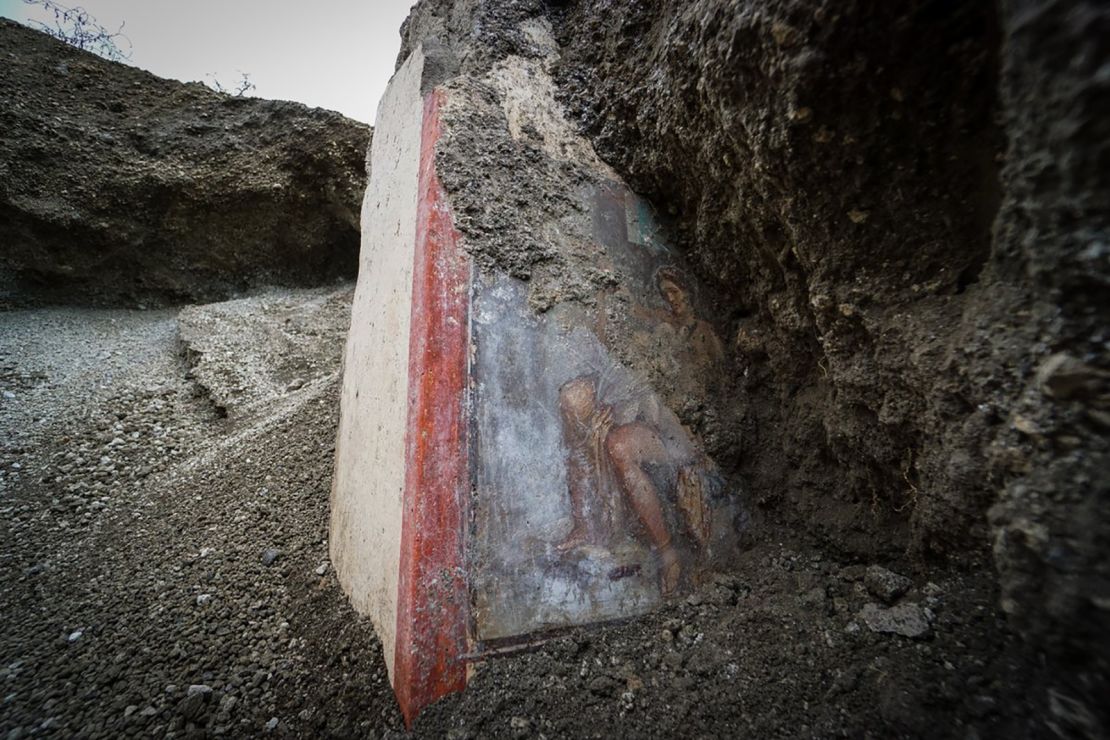An ancient fresco depicting an erotic scene from the Greek myth “Leda and the Swan” has been uncovered at the Pompeii archeological site in central Italy.
The artwork portrays the Greek god Zeus – or Jupiter in Roman mythology – taking the form of a swan and seducing the Spartan Queen Leda, the wife of King Tyndareus. Depictions of Greek mythologies have been found all over Pompeii.
The relic was unearthed Friday in the Regio V area of Pompeii, the ancient city destroyed during the eruption of Mount Vesuvius in A.D. 79.
Pictures from the excavation show the vivid color of the painting is still visible, some 2,000 years after it was buried under a thick layer of volcanic ash. In the painting, Queen Leda is portrayed sitting on a chair, draped in a golden cloak with the swan god in her lap.

“This painting, compared with others of Pompeii in the Roman world, is characterized by a pronounced sensuality,” said Pompeii archaeological park director, Massimo Osanna, in an official video. “It’s presenting Leda welcoming the swan into her lap.”
That Leda is depicted as “welcoming” the swan, as Osanna put it, is a noteworthy feature of this newly unearthed fresco. Throughout the ages, different interpretations of the myth in art and poetry have cast the encounter as either consensual or as rape.
Osanna also said the work is significant because Leda’s eyes appear to follow the viewer.
According to the Pompeii archaeological park website, the fresco was discovered in the bedroom of a house during work to stabilize the excavation site. A neighboring corridor was previously found to contain another ancient fresco – one showing the Roman fertility god, Priapus, weighing his giant phallus.
Along with other erotic works of classical mythology, the scene of “Leda and the Swan” was popular among first-century Pompeiians, according to the park’s website.
Archeologists have discovered various depictions in Pompeii houses, or domus, and in ruins of other ancient Roman towns destroyed by the eruption of Mount Vesuvius. However, these often feature Leda standing, rather than seated.
Lost and found: Incredible works discovered
“Leda and the Swan” is an important story in classical mythology, as Leda is said to have given birth to offspring who feature in several prominent Greek myths. These include Clytemnestra, the twins Castor and Pollux, and Helen, who became the wife of King Menelaus of Sparta and caused the legendary Trojan War.
The myth has also inspired some of the most famous artists and poets throughout the centuries, including Leonardo da Vinci and Michelangelo, though only copies of their work remain. Irish poet W. B. Yeats composed “Leda and the Swan” in 1923, the same year he won the Nobel Prize in Literature.










































